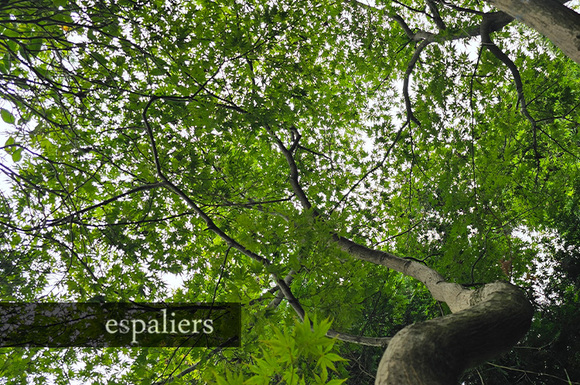The Elegance of Asymmetrical Trees
- Leestijd: 2 min.
- 5291x

Harnessing the elegance and ambiance of trees through asymmetry. As a pioneer in the cultivation of asymmetrical tree forms, we have spent years developing a diverse range of unique silhouettes. Our mission is to bring natural sun protection within closer reach and deliver tailored solutions for even the most complex terrace configurations.
- Tom
- 19 September 2024
Natural Shade, Inspired by Trees.
Enjoy soft movement and filtered sunlight—without the downsides of an oversized tree. Our asymmetrical “floating parasols” provide shade and ambiance, while keeping your terrace open and uncluttered.
The trunk? Still present, but discreetly positioned within adjacent planting.
Choose from:
Defined parasol shapes for a sleek look
Characterful asymmetrical trees for a more organic feel
A wide range of natural trunk forms ensures the right tree for each project. Integration is fully project-based—and our team is here to guide you.
Book your appointment today.
What defines an asymmetrical parasol tree?
An asymmetrical parasol tree features a sculptural, natural form designed to filter sunlight without a central trunk obstructing your terrace. It provides ambient shade while allowing winter light to flow freely.
What are the advantages compared to a conventional parasol?
This living solution offers natural cooling, aesthetic enrichment of your outdoor space, and eliminates concerns such as wind sensitivity or storage limitations. The tree matures alongside your garden, becoming increasingly striking over time.
Can the tree’s design be customized?
Absolutely. Espaliers offers both precisely shaped parasol forms and more expressive, asymmetrical trees with distinct trunk structures. Aside from standardized formats, each tree is individually unique. Selection is tailored to your project.
How much space does it require?
Because the trunk is integrated into the planted area adjacent to the terrace, the layout remains highly flexible—even compact gardens can accommodate these trees without compromise.
What is the optimal planting period?
Autumn (October–November) is ideal, ensuring healthy rooting supported by natural moisture conditions. As this is a summer-oriented product, we also provide trees in containers or Japanese root balls, enabling successful summer planting.
How much shade does it offer?
A mature parasol tree can lower terrace temperatures by 5°C to 7°C. Its asymmetrical canopy casts shade precisely where needed. Indoors, it contributes to reduced heat gain—acting as a natural air conditioner, surpassing artificial alternatives.
Is pruning necessary?
Yes, though performed conservatively. Espaliers guides the tree’s structural evolution to maintain its signature shape. Pruning is typically scheduled in winter or early summer.
Is ongoing maintenance demanding?
Not at all. The first year requires regular watering during dry spells. Afterwards, occasional thinning suffices. Espaliers provides care guidelines and offers continued support through its follow-up service.
Related articles
